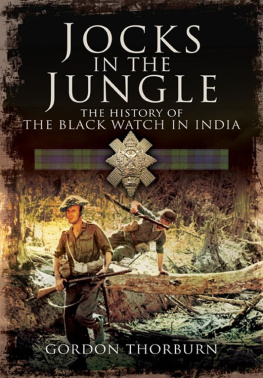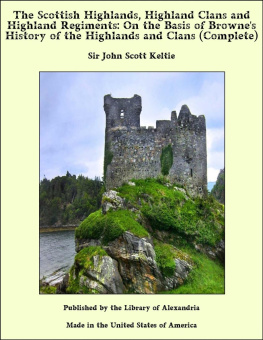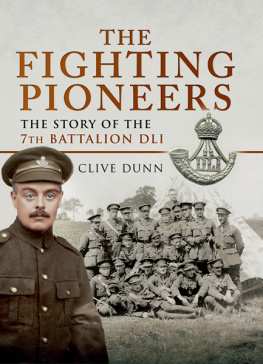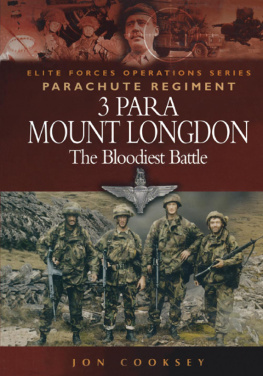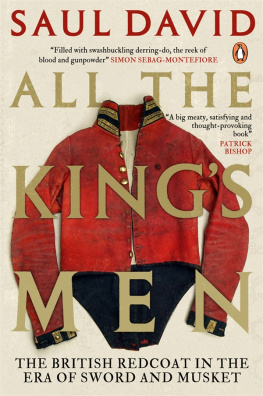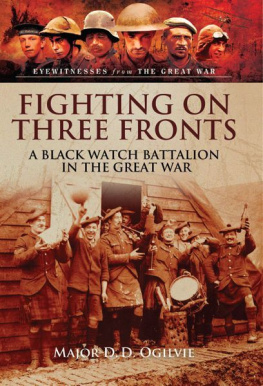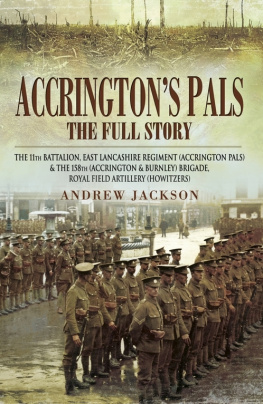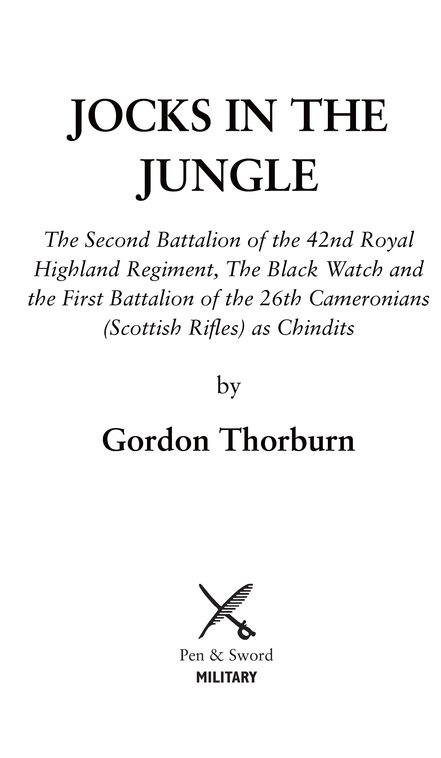Families spend holidays where the rivers flow in Madhya Pradesh, north-central India. They have elephant rides and jungle drives, hoping to see a tiger.
In 1943, there was no thought of such good times for two battalions of Scottish soldiers. For them, that country meant a new and unimaginably arduous kind of training.
Some of the Black Watch boys had seen action in Somaliland, Crete and Tobruk. Some of the Cameronians had fought the Japs in the Burma retreat. Even for these, such training was trial by ordeal. Many more of the Jocks were new, just shipped out from Scotland, but all of them were ordinary men; men from the towns and villages whod taken the Kings shilling in their countrys peril.
These were first-class British infantry, but not the super-selected Special Forces types that we know today. Nevertheless, it was a special-forces job they were supposed to do and that is what they were called, Special Force.
The challenge in Madhya Pradesh was to turn themselves into jungle fighters as good as the Japanese. They had a few short months to become Chindits.
They joined two brigades of 7,677 officers and men going into the jungle, of whom 531 were killed, captured or missing, and around 1,600 were wounded. By the end, some 3,800 were too sick to fight. Only 1,754 could be classified as effective when they came out and, in truth, half of those were fit for no more than a hospital bed. It was a miracle anybody survived at all.
And that was just two of the five brigades that went in. Was this the greatest medical disaster of World War Two? Who caused it?
Authors Note
General Orde Wingates 3rd Indian Infantry Division, called Special Force, as originally constituted and in training, was seven brigades plus various specialist units; the equivalent of thirty battalions and other forces, with most battalions divided into two columns. So, for example, 14 Brigade was four battalions from different regiments, in eight columns. Each column was about 400 hundred men.
One brigade in Chindit training was American and deployed elsewhere as the famous Merrills Marauders, and one of the British brigades was also reassigned, so the 1944 Chindits went in as five brigades. The Cameronians two columns in Number 111, and the Black Watchs two columns in Number 14 were, obviously, small parts of a greater whole, and concentrating on their stories is not meant to put them above or beyond anyone else. They were typically special, not especially special.
You may talk about your Lancers, and your Irish Fusiliers,
Your Aberdeen Militia and the Queens Own Volunteers.
Of all the other regiments thats going far awa,
Just give to me the tartan of the gallant Forty Twa.
Strolling through the green fields on a summers day,
Watching all the country girls working at the hay,
I really was delighted and he stole my heart awa
When I saw him in the tartan of the gallant Forty Twa.
(Traditional, probably nineteenth century)
On the eighteenth day of April, in the year of forty four,
When the boys of the Cameronians went marching to the fore,
It was early in the morning as the Cams were standing to,
That they met and fought the enemy on the road to Pinlebu.
Now think of the fourteenth army, the boys who fought so well,
Of the hardships they had suffered, no-one but them can tell.
Far from their homes in Blighty and the folks they loved so true,
They fought and died forgotten, on the road to Pinlebu.
(Anonymous)
Dedication
Of course this book is dedicated to all the men who fought the Japanese in the Burmese jungle, but in particular to the ones I met and to whom I was privileged to listen: Pipe Corporal Bill Lark, Corporal Jim McNeilly and Colonel David Rose DSO. I only wish that their words to me could have been amplified and reinforced by words from my own father, Private/Rifleman 14254229 Andrew Douglas Thorburn, sometime Lance Corporal, who was there but never said a thing about it.
He joined the Black Watch at No 8 Infantry Training Centre, Queens Barracks, Perth, on 16 September, 1942, where he was classified as a signaller and sent on to the Training Battalion, the 10th, on 30 December, stationed at Thurso, and then at Alnwick in Northumberland. He proceeded overseas on 12 March, 1943, as part of a draft of 120 officers and men, and was in Bombay on 11 June.
The first Chindit expedition had begun in January 1943 and ended in April, and its initial success had resulted in a new Chindit Brigade being formed; the 111th Indian Infantry, made up of 1st Battalion Cameronians, 2nd Battalion Kings Own, and 3rd Battalion of the 4th Gurkha Rifles.
The 120 Black Watch, sent to India for the purpose although not told so, were transferred to the Cameronians on 31 July to begin training in the jungle and eventually to fly in to Burma, 200 miles behind Japanese lines, with 111 Brigade, Special Force.
I am fortunate in having the personal account of an exact contemporary of my father, Frederick C. Patterson, Black Watch and Cameronians, on which to draw for this part of the history.
I say my father never spoke of it. Well, hardly ever. I can remember one occasion driving along in his car with the radio on, when the death of a man was announced. Good God above, said my father. Last time I saw him was on Hill (whatever it was).
He was six feet tall, my father, and 154lb (11st) when he joined the army. He came home from the jungle, after contracting amoebic dysentery, weighing a little over six stone. This was the only fact to become part of family history; that my father was six stone when he was invalided out, and is the reason why the medical disaster of the Chindits, usually neglected in telling the story, is such an important part of this book.
He recovered at a hospital in Southport, and went back into the police force he had volunteered to leave. For many, many, years afterwards, until eventually persuaded by my mother, he never would go abroad for holidays. Abroad, you see, was an awful place.

